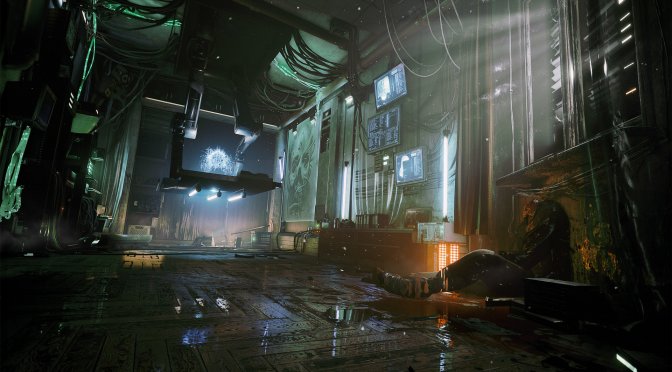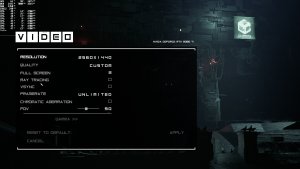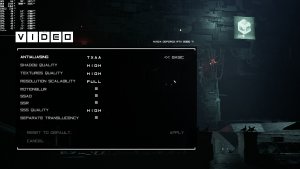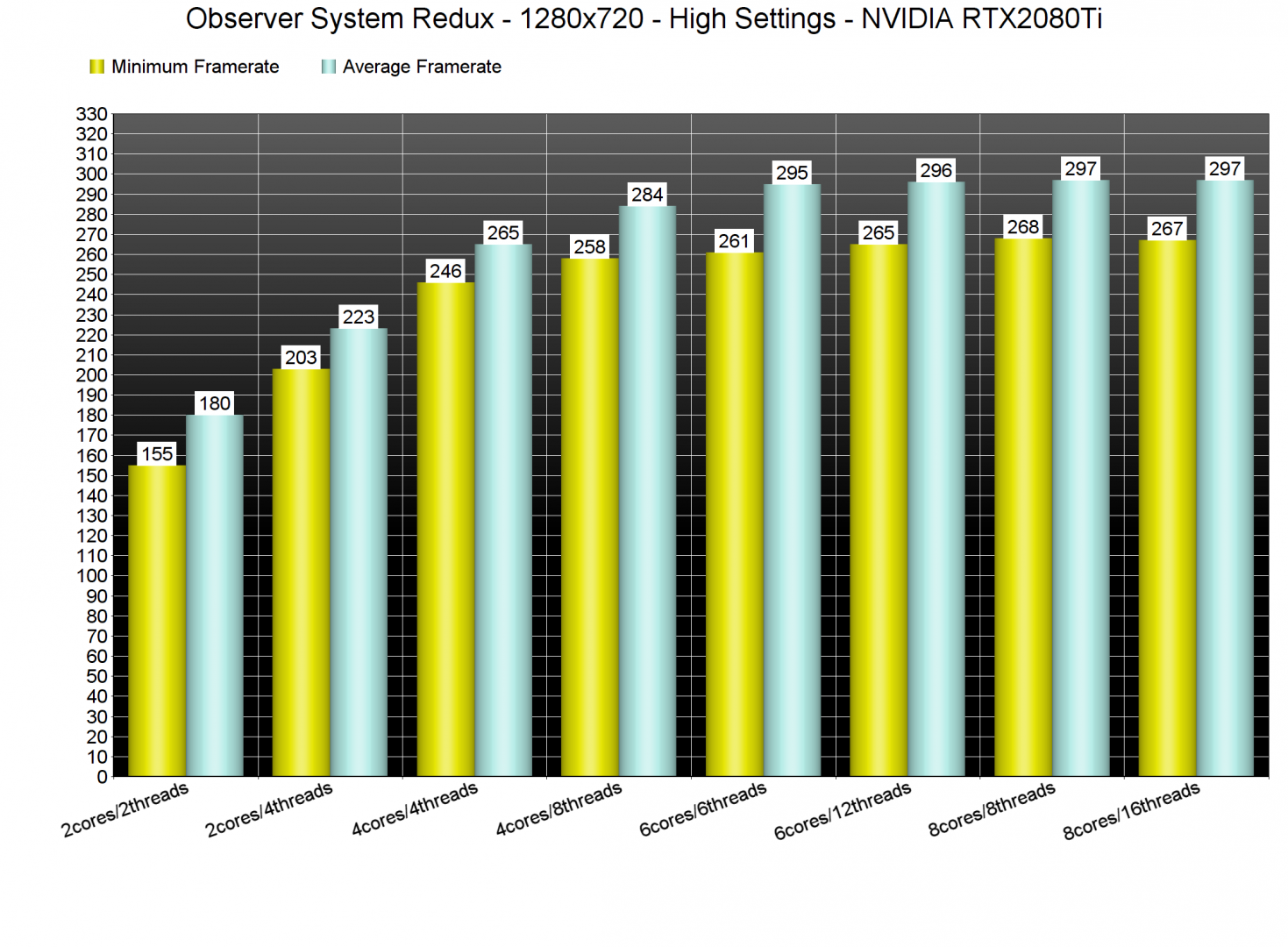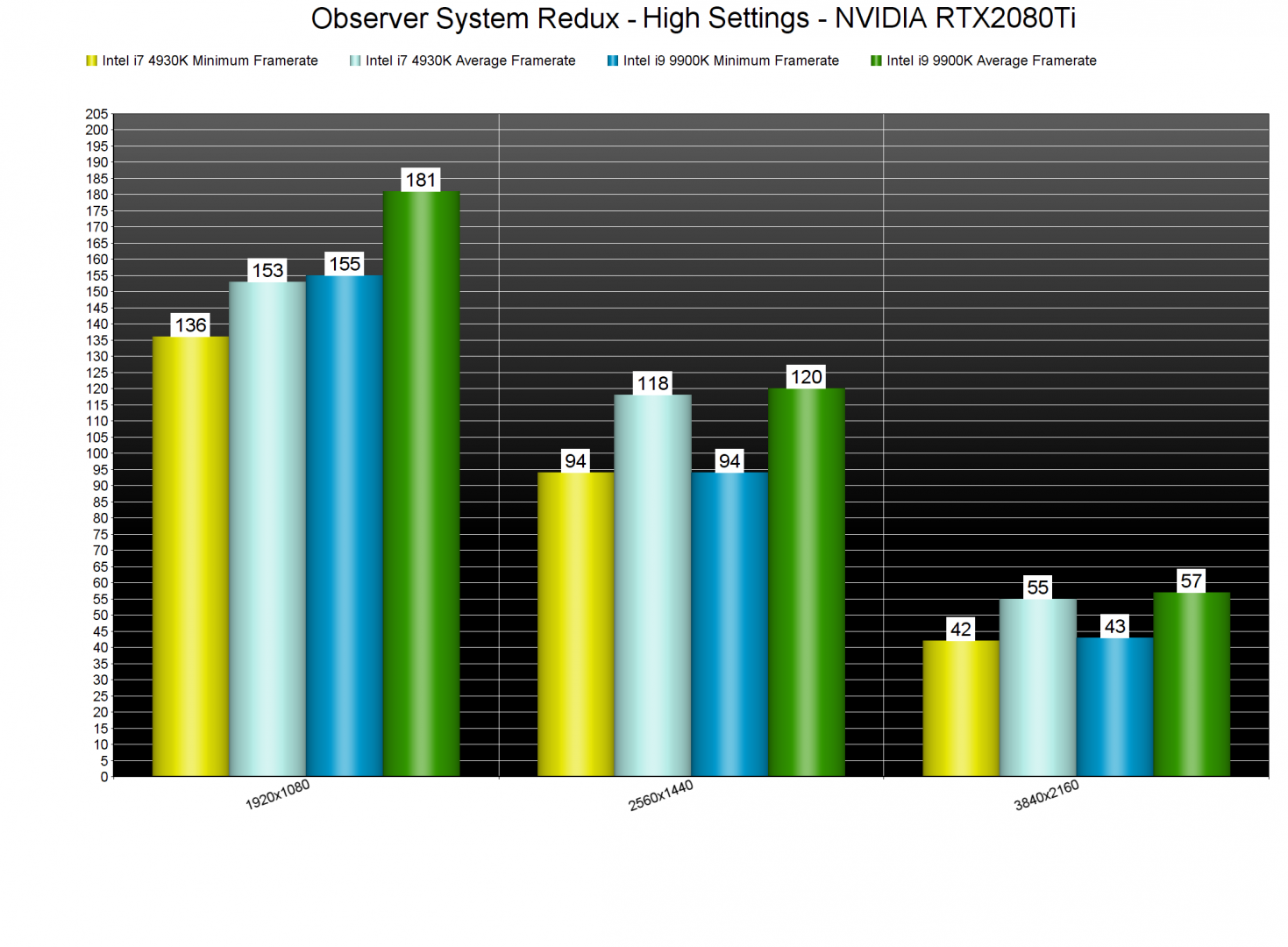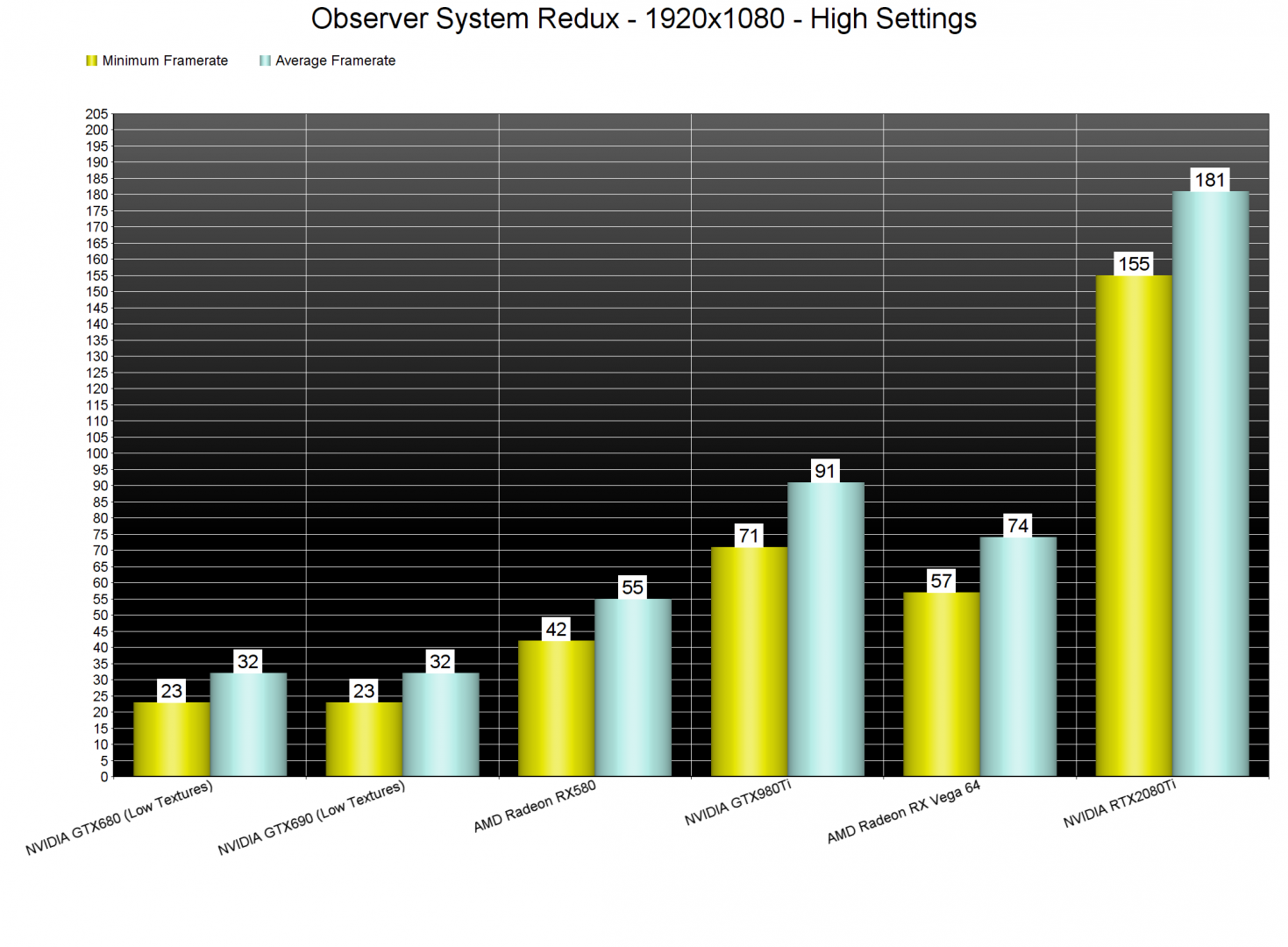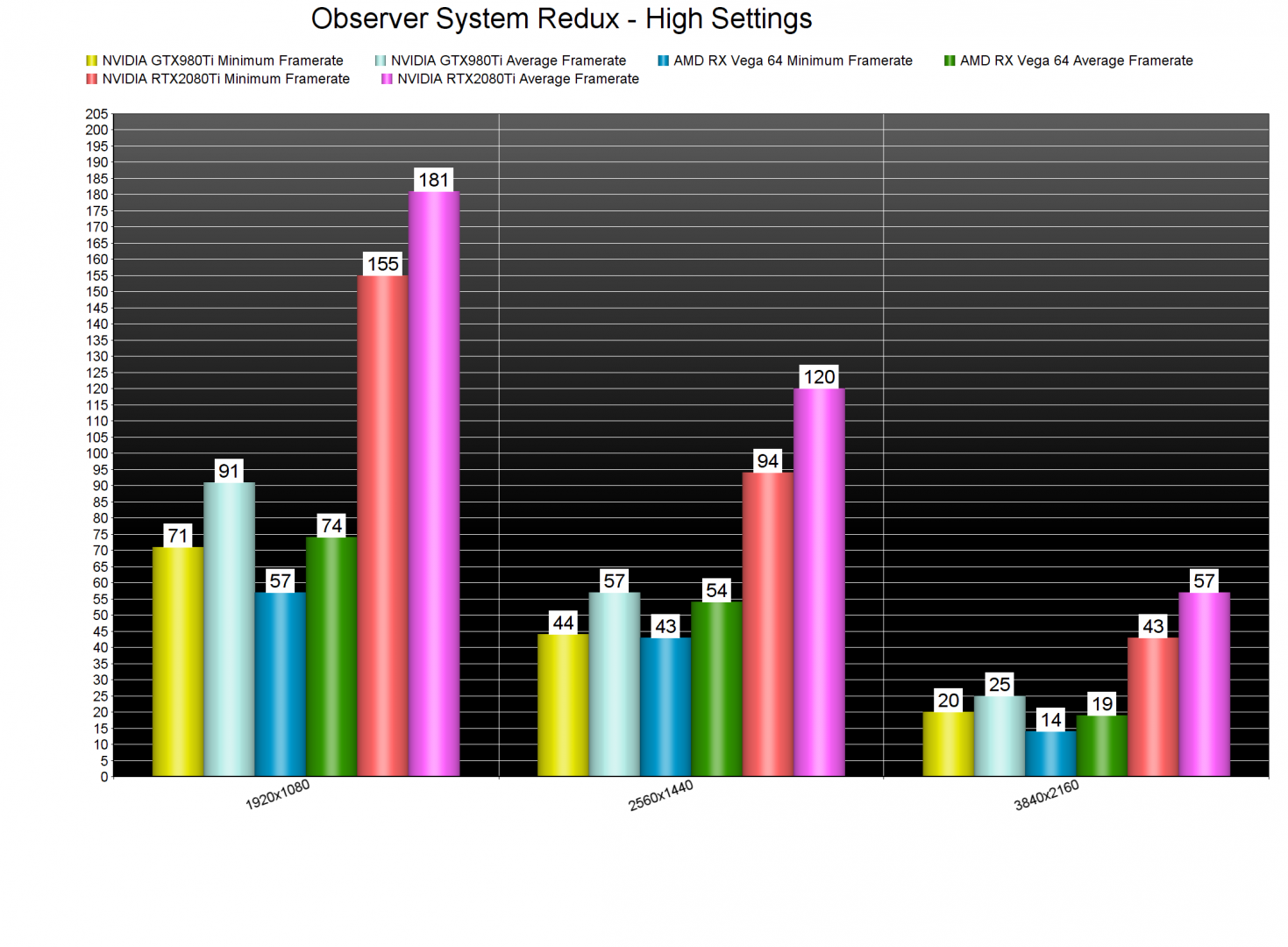Earlier this month, Bloober Team released an upgraded version of >observer_, Observer System Redux. As such, and following our Ray Tracing benchmarks, it’s time now to benchmark it and see how it performs on the PC platform.
For this PC Performance Analysis, we used an Intel i9 9900K with 16GB of DDR4 at 3600Mhz, AMD’s Radeon RX580 and RX Vega 64, NVIDIA’s RTX 2080Ti, GTX980Ti and GTX690. We also used Windows 10 64-bit, the GeForce driver 457.30 and the Radeon Software Adrenalin 2020 Edition 20.11.1 drivers. NVIDIA has not added any SLI profile for this game, meaning that our GTX690 behaved similarly to a single GTX680.
Bloober Team has added a few graphics settings to tweak. PC gamers can adjust the quality of Anti-aliasing, Shadows, Textures and Screen Space Shadows. There are also options for Motion Blur, SSAO, Screen Space Reflections and Separate Translucency. Moreover, you can find a FOV slider and an option to limit your framerate.
In order to find out how the game scales on multiple CPU threads, we simulated a dual-core, a quad-core and a hexa-core CPU. And, we are happy to report that Observer System Redux does not require a high-end CPU. Even our simulated dual-core system was able to push over 144fps at 1280×720 on High Settings.
Our older generation Intel CPU had also no trouble running the game. The Intel Core i7 4930K was able to push more than 120fps at 1920×1080 on High settings. At 1440p and 4K, we were limited by our RTX2080Ti.
Observer System Redux is using Unreal Engine 4 and favours NVIDIA’s hardware over AMD’s (at least when it comes to the older GPU models). For our GPU benchmarks, we used one of the most demanding scenes of the game. As such, consider our benchmark as a stress test (other areas will, obviously, run faster). Our GTX980Ti was able to beat the more powerful AMD Radeon RX Vega 64 by almost 20fps. Thus, AMD will have to further optimize its drivers for this game.
At 2560×1440, the only GPU that was able to run the game smoothly was the RTX2080Ti. Surprisingly enough, the gap between the GTX980Ti and the RX Vega 64 was really small in this resolution. As for 4K, none of our graphics cards was able to run the game with 60fps.
Surprisingly enough, Bloober Team has addressed most of the issues we had with the original game. For instance, it added an option to disable Chromatic Abberation, as well as a FOV slider. So yeah, kudos to the team for at least offering some QoL improvements.
Graphics-wise, Observer System Redux looks a bit better than the original version, which came out three years ago. The game now features better textures, new animations, models and effects. Still, its ace in the hole is its lovely cyberpunk-ish art style, and not the tech powering it.
All in all, Observer System Redux can run without major performance issues on a variety of PC systems. The game does not require a high-end CPU, and can run smoothly on various NVIDIA GPUs. However, Observer System Redux currently under-performs on AMD’s GPUs. We’ve seen this happening a lot lately, so here is hoping that AMD will improve things via some newer drivers.

John is the founder and Editor in Chief at DSOGaming. He is a PC gaming fan and highly supports the modding and indie communities. Before creating DSOGaming, John worked on numerous gaming websites. While he is a die-hard PC gamer, his gaming roots can be found on consoles. John loved – and still does – the 16-bit consoles, and considers SNES to be one of the best consoles. Still, the PC platform won him over consoles. That was mainly due to 3DFX and its iconic dedicated 3D accelerator graphics card, Voodoo 2. John has also written a higher degree thesis on the “The Evolution of PC graphics cards.”
Contact: Email

